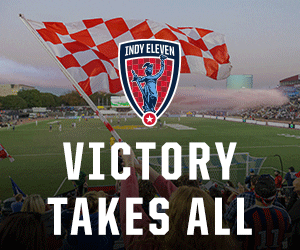Over the years Indianapolis has been recognized for many things, especially as host of the annual 500-mile race, TV host and comedian David Letterman and basketball talent.
However, the city also claims a proud legacy of jazz music.
While New Orleans is often looked at by many as the birthplace of jazz and some of its iconic musicians, Indianapolis had its own thriving jazz scene and produced such luminaries as Slide Hampton, Freddie Hubbard, J.J. Johnson and Wes Montgomery.
They and many other popular performers perfected their craft by performing in venues on the historic Indiana Avenue in downtown Indianapolis, which was once the commercial and entertainment center of the city’s African-America community.
“The history of the extraordinary jazz musicians who performed on that fabled entertainment boulevard is rich and broad,” said David Leander Williams, author of the new book, Indianapolis Jazz.
David Baker, chairman emeritus of the jazz studies department at Indiana University, noted that many cities with a large Black urban population had an area in which the main businesses, restaurants, theaters, clubs and other buildings of importance were located.
“Within this area there was often a street or boulevard of particular prominence. For the Black community of Indianapolis, that street was Indiana Avenue,” Baker said.
Released just in time for Black History Month, Indianapolis Jazz covers a glorious time when Indiana Avenue was a bustling street and vibrant thoroughfare lined with a variety of clubs and venues that attracted musicians from around the country and produced influential artists in jazz.
Since jazz became popular across the United States during the 1920s, Indianapolis has been known as a city with strong jazz roots, thanks in large part to the music community that was born in the predominantly African-American clubs and performance venues located on Indiana Avenue between the 1920s and ‘50s.
Williams noted that Indiana Avenue had already served as a destination point for many escaped and ex-slaves during the 19th century. By the 1920s, businesses on the avenue and the musicians who played on it were celebrated among local African-Americans because they could not patronize most white downtown department stores, restaurants and theaters.
“At the turn of the century, when segregation was the law of the land, business enterprises and life in general were booming on Indiana Avenue,” Williams said. “It developed into an entertainment empire that dispatched jazz and entertainment emissaries to the four corners of the earth and won the Avenue international acclaim.”
In Indianapolis Jazz, readers are introduced to musicians and songwriters who often overcame significant challenges to make a living performing the music they loved. They were frequently seen playing in places on the avenue, and include such well-respected musicians Jimmy Coe and his orchestra, vocalist Sarah McLawler, Willis Kirk, songwriter Noble Sissle, The Hampton Sisters, pianist Melvin Rhyne, the dancing duo of Leonard and Leonard and vocal group The Ink Spots.
In the book, Slide Hampton gave credit to his experiences on the avenue for having shaped a style that has helped him win two Grammys, get honored by the National Endowment for the Arts and inducted into the Indianapolis Foundation Jazz Hall of Fame.
By the early 1970s, Indiana Avenue had undergone a decline, due largely to many businesses closing, rising crime, highway construction that displaced many area residents and racial desegregation that prompted wealthier and middle-class African-Americans to move into other neighborhoods.
Today, however, some elements of Indiana Avenue and its jazzy heyday are still present with the restored Madame Walker Theatre Center, as well as some of the Lockefield Gardens apartments, which were built at a time when some of the country’s greatest entertainment personalities still walked Indiana Avenue.
Ralph Adams, a local jazz music promoter who is featured on a local radio station, said there are still places that those who enjoy jazz music can go to help secure the genre’s legacy in Indianapolis.
“With the history of Indiana Avenue and significant contributions made to the music scene by so many musicians, jazz has earned a significant place in the esteem of many people who are from here,” said Adams. “We need to do everything possible to support this music so that it will be enjoyed for generations to come.”





